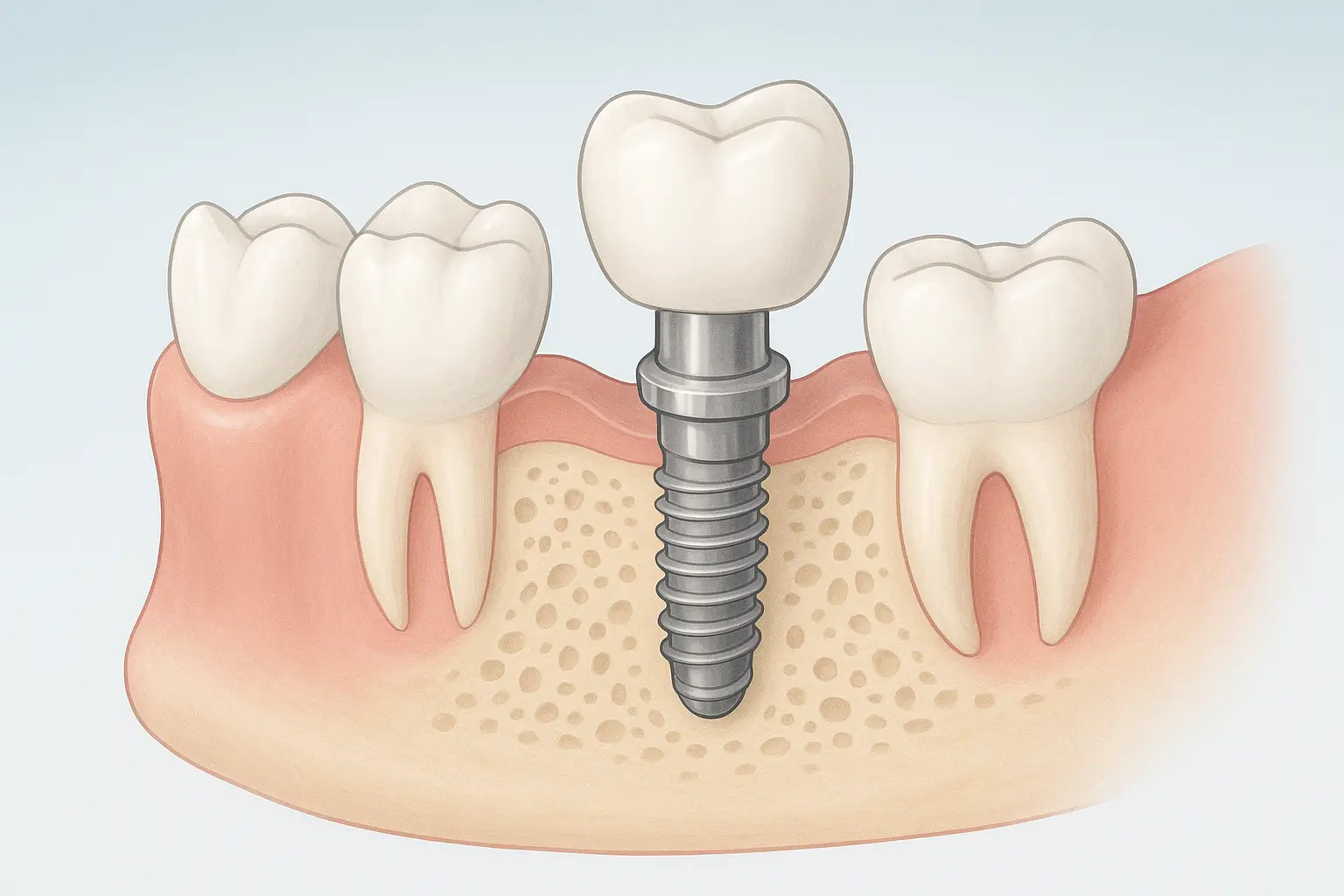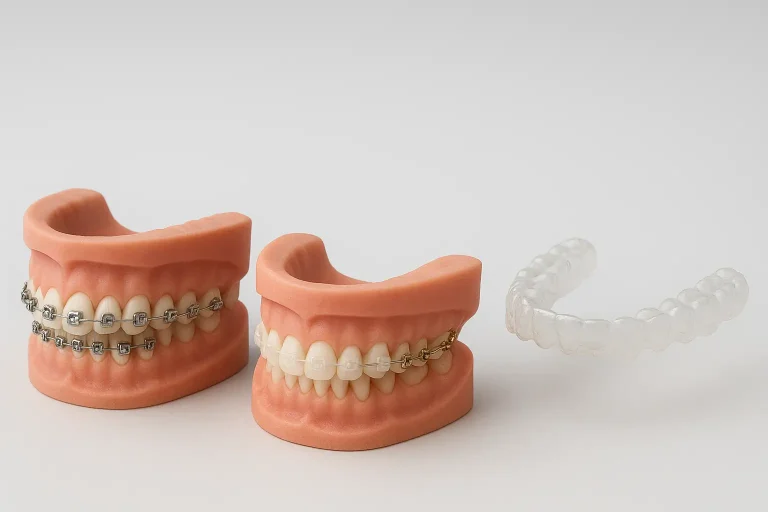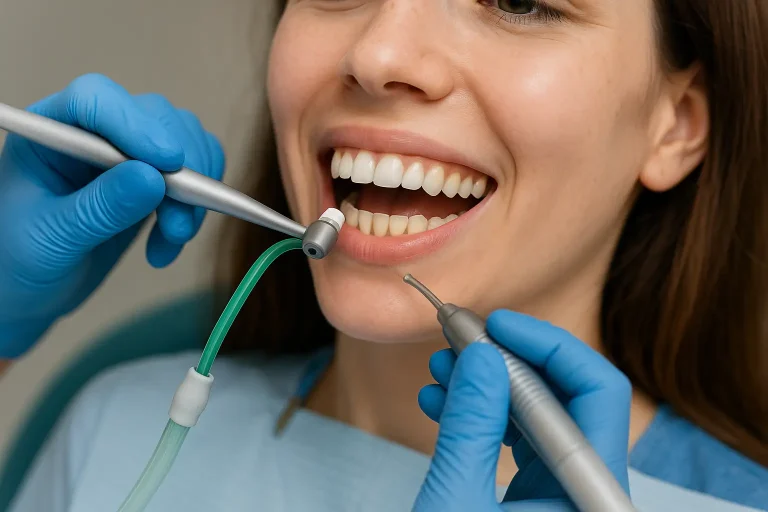Book Appointment Now

Single Tooth Implant: Steps and Cost (Professional Guide for Natural Smile & Smart Conversion)
If you’ve lost a single tooth, the impact goes far beyond just the look of your smile. Chewing becomes harder, your bite can shift, and the jawbone may start to shrink over time. This is where a single tooth implant comes in—a permanent solution that restores both function and aesthetics, without the need to file down adjacent healthy teeth as with traditional bridges.
In this complete guide, you’ll discover what a single tooth implant is, who it’s for, how it’s done, how long it takes, and what factors determine the price. Plus, you’ll get expert tips to improve your results, boost your website’s SEO visibility, and convert readers into real appointments.
What Is a Single Tooth Implant?
A single tooth implant replaces the root of a missing tooth with a titanium implant, topped by an abutment and a custom crown that matches the color and shape of your natural teeth.
The result: a fixed, stable tooth that feels and functions just like your original tooth.
Why choose an implant over a bridge?
- Preserves surrounding teeth—no filing or preparation required.
- Stimulates the jawbone naturally to prevent bone loss.
- High stability for chewing and speaking compared to removable dentures.
- Long-term solution with proper planning and maintenance.
Are You a Good Candidate for a Single Tooth Implant?
- You’ve lost one tooth and want a permanent, natural-looking solution.
- Your overall health is stable, and there are no active gum infections.
- You have sufficient bone density, or you can undergo a minor bone graft if needed.
- You are committed to follow-up care, proper hygiene, and post-op instructions.
Next step: A professional exam and 3D imaging to confirm if you’re ready for the procedure.
Step-by-Step Process of a Single Tooth Implant
1) Consultation and Clinical Examination
Your dentist will review your medical history, medications, and allergies. Then, they’ll check your gums, teeth, and bite alignment to rule out infections and create a safe, tailored plan.
2) CBCT 3D Imaging
Cone Beam Computed Tomography (CBCT) provides a detailed 3D map of your jaw, nerves, and sinuses.
It helps determine the exact implant length, width, and angle, and whether bone grafting or sinus lift is required.
Accurate planning at this stage reduces surgical risks and ensures long-term stability.
3) Implant Placement Under Local Anesthesia
For single tooth implant placement, the procedure is usually short and comfortable.
- The area is prepared carefully.
- The titanium implant is inserted following the 3D plan.
- A temporary crown may be added for aesthetics, but no heavy biting on the implant during early healing.
4) Osseointegration (Healing Phase)
The implant needs time to bond with the jawbone.
This phase typically lasts several months, depending on bone quality and overall health factors such as smoking or diabetes control.
5) Abutment and Final Crown
Once the implant is stable, the abutment is attached, and a zirconia or porcelain crown is custom-made to perfectly match your natural teeth.
The dentist then checks bite alignment and provides detailed care instructions.
Healing Timeline: What to Expect
- Days 1–3: Mild swelling or bruising; follow cold compresses and prescribed pain medications. Stick to soft, cool foods.
- Weeks 1–6: Soft tissue gradually heals. Clean gently around the implant area using a soft-bristle toothbrush and saline rinse.
- Until Final Crown Placement: Regular follow-ups to monitor osseointegration. The permanent crown is placed in one or two visits after healing is complete.
Important Tip: Smoking slows healing and increases the risk of implant failure. Quitting during this phase significantly boosts success rates.
How Much Does a Single Tooth Implant Cost?
Implant costs vary because no two cases are the same. Final pricing depends on a detailed examination and CBCT imaging.
Here are the key factors that influence cost:
- Implant system & quality: Titanium grade, design, and manufacturer.
- Crown material: Zirconia (premium aesthetic option) vs. traditional porcelain.
- Additional procedures: Bone graft, sinus lift, or gum treatment before implant placement.
- Location of the tooth: Back molars vs. front teeth have different requirements.
- Experience and technology used: Digital planning and surgical guides improve precision.
At Dr. Mohamed Fahmy’s clinic:
The starting price for a single tooth implant is 5,500 EGP, with the exact figure confirmed after your exam and CBCT scan.
You can also get a remote preliminary estimate by sending your photos and X-rays via WhatsApp, then finalize everything in the clinic.
Send us your X-rays now to get a fast estimate from home.
Alternative Solutions: When an Implant Isn’t Ideal
- Fixed bridge: Faster and sometimes cheaper initially, but requires filing down healthy adjacent teeth.
- Partial removable denture: A temporary or budget-friendly option, but less stable and comfortable.
- Leaving the gap empty: Not recommended, as it causes teeth shifting, bone loss, and bite issues over time.
Post-Op Care Guide
- Take medications exactly as prescribed, and call immediately if you notice unusual pain or bleeding.
- Stick to soft foods and avoid chewing on the implant side until cleared by your dentist.
- Maintain gentle oral hygiene around the implant site: soft-bristle brush and interdental tools as instructed.
- Never skip follow-up appointments, as early detection prevents complications.
Common Mistakes to Avoid
- Ignoring gum disease before implant placement.
- Biting hard foods or applying pressure too soon.
- Relying on a generic online price without a professional exam and scan.
- Skipping follow-up visits or neglecting daily cleaning.
Frequently Asked Questions (FAQs)
Q: Is the procedure painful?
A: It’s done under local anesthesia. Most patients describe it as comfortable, with only mild discomfort managed by prescribed painkillers.
Q: How long does it take to get my final crown?
A: The implant surgery is quick, but osseointegration takes several months before the final crown can be placed.
Q: Will I need a bone graft?
A: Determined by your CBCT scan. Many patients only need minor grafting, while some don’t need any at all.
Q: When can I eat normally?
A: Start with soft foods, then transition gradually. Full loading is allowed after final crown placement and healing.
Q: How long will the implant last?
A: With proper care, dental implants can last many years, offering excellent long-term success rates.







